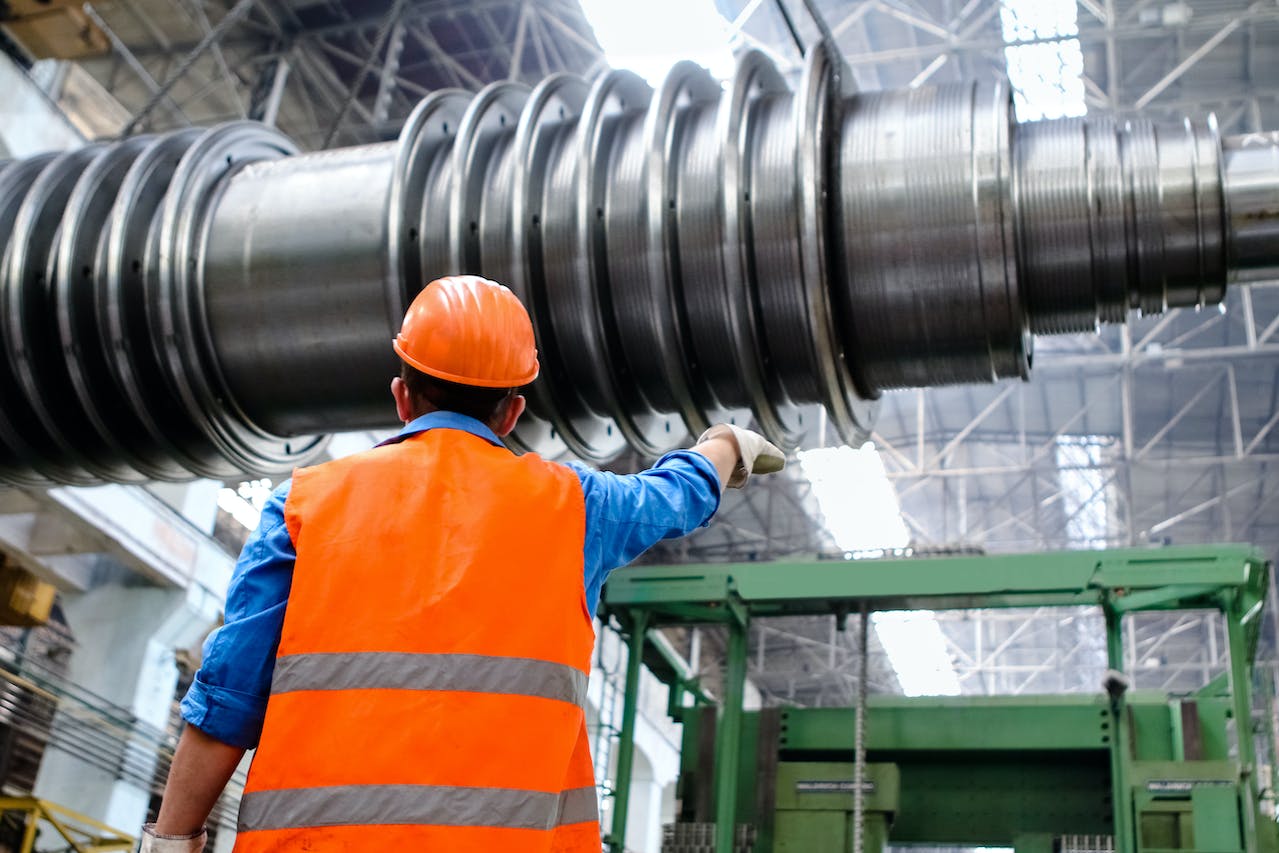
Top 10 Warehouse Safety Guidelines
The warehouse is a bustling hub of activity where safety cannot be overemphasized. In these environments, where machinery, heavy loads, and constant movement converge, implementing robust safety guidelines is not just a regulatory requirement, but a moral imperative. Several states passed Warehouse Ergonomics laws in 2023: Washington state, California, and Minnesota. It would not be surprising to see more of these laws in 2024.
This article discusses the top 10 fundamental safety guidelines that are essential for maintaining a secure and efficient warehouse workspace with low injury rates. From the use of personal protective equipment to the implementation of emergency protocols, these guidelines are designed to protect the workforce, enhance operational efficiency, and create a culture of safety that permeates every aspect of warehouse operations.
Enhance warehouse safety and efficiency with expertly crafted guidelines – ErgoFit Consulting is here to help business owners implement best practices, contact us today.
What Are the Top 10 Fundamental Safety Guidelines for Warehouse Operations?
1. Develop Safety Procedures inside of your Operational Documents: Establishing and implementing proper safety procedures within your SOP’s for various warehouse operations is crucial. Safety protocols should not be separated from any SOPs because safety must be operationalized to achieve the best results. These SOPsprocedures should guide employees on how to safely handle equipment and materials, and how to act in case of emergencies.
2. Control Forklift Hazards: Identifying and eliminating potential forklift hazards form the second guideline. This most importantly includes preventing forklift-human accidents by protecting human walkways with multiple layers of control (bollards, flashing lights, stanchions, forklift floor lighting). It also includes protecting property from damage by using, for example, pallet rack structure guards. Regular forklift inspections are crucial for identifying problems..
3. Control Ergonomic Risks: Conduct ergonomic task assessment to identify the highest risk tasks performed by personnel and devise improvements or solutions to control those risks. Typically in a warehouse, this involves manual material handling (MMH) and repetitive awkward postures or grip forces. Our approach involves assessing the top 5-10 highest-risk tasks and providing tailored solutions across the hierarchy of controls that integrate into the existing (or an improved) workflow.
4. Control Electrical Hazards: The third guideline involves controlling general safety hazaards, such as electrical, chemical, noise, hazards. This includes classifying chemical hazards and effectively communicating these risks to the staff (MSDS); implementing safe wiring methods and ensuring that all electrical installations are adequately covered and insulated to prevent accidents; and noise abatement Regular re-checks and maintenance of equipment and systems should be a routine part of safety protocols to identify new hazards and reinforce safety measures.
5. Label Hazardous Zones: Clearly labeling hazardous zones within the warehouse is essential. Safety signs and floor markings such as danger, warning, caution, and fire safety signs must be prominently displayed. These signs help in raising awareness among employees and visitors, thereby preventing accidents.
6. Implement Machine Safeguards: Safeguarding mechanical power-transmission apparatus is another important safety measure. Regular inspections, proper machine guarding, lock-out-tag-out, and appropriate lubrication are necessary to keep machinery safe for operation.
7. Preventive Maintenance: Regular preventive maintenance of machinery, equipment, tools, and the warehouse structure itself is key in preventing accidents. Well-maintained equipment is less likely to malfunction, thereby reducing the risk of injuries and ensuring smooth operations.
8. Respiratory Protection: Providing suitable HVAC and dust control systems is required, with appropriate-level respiratory personal protective equipment, especially in environments where workers are exposed to dust, vapors, or other airborne contaminants. A comprehensive respiratory protection program should be in place to ensure the health and safety of the staff. Periodic air sampling should be conducted and documented.
9. Inspect Ladders Regularly: The fifth guideline is the regular inspection of ladders. Each ladder should be checked for defects and stability before use in every work shift. This practice is crucial in reducing ladder-related accidents, which are common in warehouse environments.
10. Emergency Preparedness: Being prepared for emergencies is vital. This includes maintaining clear and well-marked exit routes, ensuring adequate emergency lighting, and having an operable employee alarm system. Employees should be regularly trained on emergency evacuation procedures and emergency lighting should be verified to be in working order. An often over-looked item is to ensure you have an evacuation plan and equipment for any employees with disabilities.
Adhering to these top 10 safety guidelines is essential for maintaining a secure and efficient warehouse workspace. Each guideline plays a critical role in ensuring the safety and well-being of workers, and in turn, contributes to the overall productivity and efficiency of warehouse operations.
Related Link: Processes To Have To Ensure A Safe And Healthy Work Environment
How Can Proper Training Programs Contribute to Warehouse Safety?
Proper training programs are crucial in enhancing warehouse safety. However, training alone is an insufficient level of control due to relying on human behavior, rendering it only 8 – 20% effective in mitigating a hazard. Training in workers’ native languages ensures that every employee understands the risks associated with their work environment and how to mitigate them. Regular training sessions on ergonomics, the use of PPE, hazard communication, and emergency protocols keep safety at the forefront of employees’ minds. Additionally, specialized training for handling specific equipment (e.g. forklifts) and understanding the warehouse layout contributes to a safer working environment.
Moreover, training programs should also include drills for emergency situations like fires or chemical spills. This not only prepares employees for handling such incidents but also helps in evaluating and improving the existing emergency response procedures. Regular training and drills ensure that employees remain alert and knowledgeable about safety protocols, significantly reducing the likelihood of accidents.
What Measures Should Be Taken to Prevent Common Warehouse Accidents?
Preventing common warehouse accidents requires a multifaceted approach. Most important is being extremely vigilant about improving and monitoring your safeguards to prevent forklift accidents. Redundant controls are crucial.
Secondly, maintaining operational features for exit routes, such as adequate lighting and clear markings, is crucial. This ensures that employees can quickly and safely evacuate in case of an emergency. An operable employee alarm system is also essential in alerting staff to emergencies.
Thirdly implementing safeguards for mechanical power-transmission apparatus is necessary to prevent injuries from machinery. This includes regular inspections, machine guarding, and proper lubrication of equipment. By keeping machinery in good working condition and ensuring that protective measures are in place, many common warehouse accidents can be prevented.
Related Link: Base Level of Fitness Goes Beyond Injury Prevention
How Does Adherence to Safety Guidelines Improve Overall Efficiency in a Warehouse?
Adherence to safety guidelines not only ensures the well-being of employees but also significantly improves overall warehouse efficiency. A safe work environment minimizes the risk of accidents, which can cause costly downtime, lost time injuries, and disrupt operations. By preventing accidents, warehouses can maintain a steady flow of operations without unplanned interruptions or missing personnel.
Moreover, a focus on safety fosters a positive work culture, leading to increased employee morale and productivity. When employees feel safe and valued, they are more likely to be engaged and efficient in their work. Consequently, by prioritizing safety, warehouses can achieve higher productivity levels and operational excellence.
How Can ErgoFit Consulting Help
ErgoFit Consulting plays a vital role in enhancing warehouse safety. With our expertise in lean ergonomics, facility and workflow design, and occupational therapy, we can help warehouses implement these top safety guidelines effectively. Our approach involves assessing the top 5-10 highest-risk tasks and providing tailored solutions across the hierarchy of controls that integrate into the existing (or an improved) workflow.
ErgoFit’s services extend beyond traditional safety measures. We offer customized training after assessments, along with facilitating and training internal teams to follow a transparent process for continuous improvement in your facility which helps you monitor and improve ergonomic practices in the warehouse. ErgoFit Consulting can help warehouses not only adhere to safety guidelines but also enhance overall employee health, performance, and productivity.
Prioritize the well-being of your workforce with effective warehouse safety measures – reach out to ErgoFit Consulting for expert advice tailored to your business needs.
Building a Safer Warehouse Environment
Adhering to these top 10 warehouse safety guidelines is crucial for creating a safe and productive work environment. Each guideline serves as a pillar in building a robust safety culture that not only protects employees but also contributes to the overall efficiency and success of warehouse operations. Implementing these safety measures is a proactive step towards minimizing risks, preventing accidents, and ensuring that the warehouse remains a secure place for all. By embracing these safety practices, warehouse managers and staff can work together to maintain a workspace where safety is paramount and productivity thrives.
Related Link: Do Back Belts Reduce Back Injuries?
